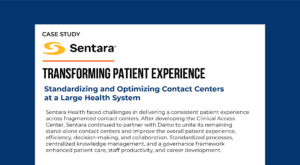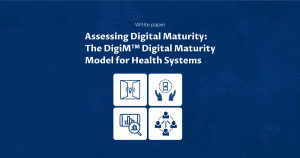How Far Has Telehealth Actually Come?

Originally published on Forbes
Telehealth has become more integrated into care delivery as part of the emerging trend of hybrid models of care. Patients and doctors find it valuable, especially for improving access to care. However, the drop in telehealth volumes since the pandemic peak also reflects patients’ (and doctors’) desire for more in-person visits. Emerging research paints a nuanced picture of the evolution of telehealth.
Successes And Challenges
A survey of physicians by the American Medical Association (AMA) indicates that an overwhelming majority believe telehealth has improved access to care, and a significant number believe that patient satisfaction has improved as well. However, less than half the respondents indicated that telehealth has actually reduced costs. Some of this may have to do with the fact that telehealth is reimbursed at a lower rate. Increased telehealth volumes also create additional work for already overworked clinicians and caregivers. The emergence of technologies such as voice-enabled transcription promise to alleviate some of the burden by saving time on documentation. However, the fragmented nature of the digital health solutions landscape, the lack of integration, suboptimal workflows and inconsistent adoption across enterprises are all challenges that I believe will limit the growth of telehealth.
The use cases for telehealth indicate that a large percentage of telehealth is related to preventative care and routine medical management, especially for chronic conditions. This is a blessing for patients who are unable to travel for in-person routine visits, especially older populations or those who lack personal transportation. New use cases may hold more promise for telehealth. One example is behavioral health, as amply borne out by the breakneck pace of funding for digital mental health startups. Digital startups representing mental healthcare raised over $5 billion in 2021, nearly double the amount raised in 2020, and representing one sixth of the total funding for digital health.
While increased access and convenience have improved overall satisfaction rates for telehealth, the numbers mask the fact that digital experiences in healthcare have a low bar relative to other sectors. In one of my previous columns, I discuss the need for telehealth to go beyond simply replicating the in-person experience and move toward reimagining the health care experience. Physicians in the AMA survey point to the need for additional investments to promote digitally enabled care, indicating that telehealth merely replaces in-person care today.
Measuring Progress
How does one keep score of progress with telehealth? Most measures of telehealth effectiveness today focus on access to care and patient satisfaction, with a significant number of respondents lacking any measures for assessing the value of telehealth. One organization I work with tracks volumes for real-time virtual visits and asynchronous e-visits, which provide only a limited view of the impact of telehealth investments on access and outcomes. For many organizations that have invested in telehealth, the focus is on sustaining existing telehealth programs and integrating them seamlessly with in-person care as we move toward a hybrid model. My work with healthcare CIOs and Chief Digital Officers indicates that improving adoption levels for telehealth and digital health is an immediate priority to ensure continued investment commitment.
The expansion of telehealth to a broader range of healthcare services or toward more comprehensive enterprise adoption partly depends on the reimbursement landscape and government policy. Concerns around health equity and the “digital divide” factor into telehealth expansion as well. The lack of access to technology (bandwidth, data, devices) and low digital literacy among the most vulnerable populations are significant barriers for telehealth, as are policy uncertainties and lack of insurance coverage, especially for audio-only access to care. Macro-economic factors can play an unexpected role as well in the economics of telehealth. The spike in gas prices has dampened in-person visits among low-income populations, forcing them to rely on virtual visits or on provider-paid ride-share services to get themselves to appointments.
A Work In Progress
The technology landscape for enabling a seamless digital experience is still evolving. Most video visits are conducted via standalone platforms that don’t integrate seamlessly with one another or with core transaction systems such as EHR. Many platforms (such as Zoom) that started as convenient ways to interact with patients during the pandemic have now retrofitted their tools with adequate privacy and security protections to emerge as viable options in the healthcare context. However, the same factors that led to quick adoption of available tools have also led to multiple platforms within an enterprise, which will force a reckoning regarding consolidation of platforms and standardization of workflows.
Interestingly, the AMA survey indicates telehealth hasn’t made as much progress with remote care management, mainly due to challenges in automated gathering of data from remote sensors and devices. Based on my work, I believe the fragmented nature of the technology vendor landscape, the absence of a standard data model for remote monitoring devices, and the quality of data gathered will remain significant obstacles to improving healthcare outcomes for the foreseeable future.
Digital transformation is a work in progress when it comes to reimagining health care, but the emergence of thousands of digital health innovators bears witness to the opportunity before us. Telehealth legislation must encourage further investments in telehealth, not least to alleviate the acute shortage of healthcare workers at all levels. Ultimately, the goals for all participants in health care is increased access, improved outcomes and lower total costs of care. At least by one measure, telehealth has significantly improved access to care—the AMA survey indicates that first visits for patients now happen in four or five days instead of three to four months. This is something to celebrate in the short-term.














